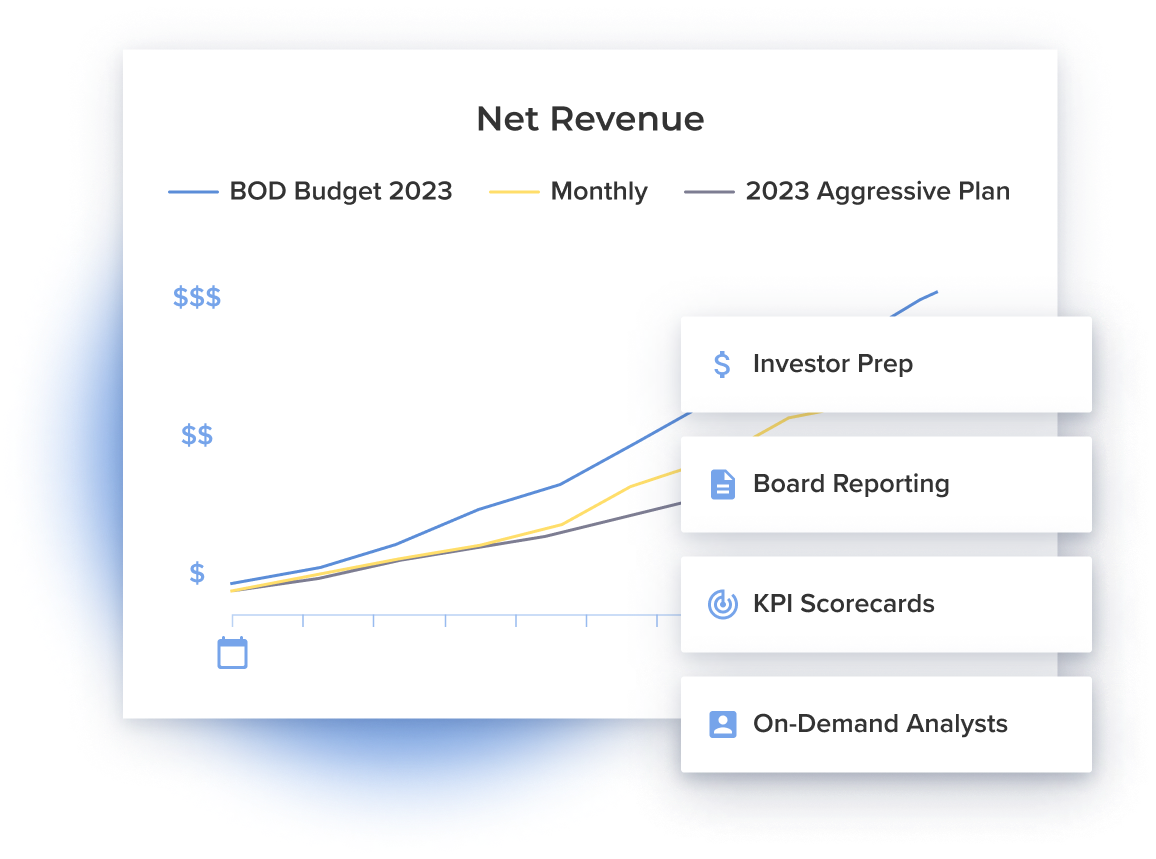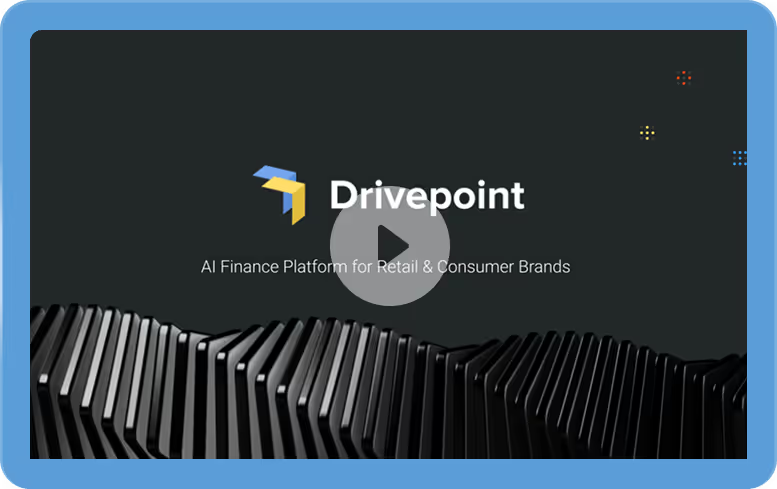5 Strategies to Help Your Brand Go Big in Wholesale in 2024


As 2024 approaches, prices are up for consumers, brands, and suppliers alike. For brand operators, it's more important than ever to get profitable and scale your omnichannel distribution.
But that's easier said than done — how does a brand get profitable under these conditions?
In many cases, DTC brands are broadening their aspirations to wholesale. An omnichannel approach is clever (and necessary) for many businesses. However, there are some wholesale secrets you can only learn from experience.
That's why Drivepoint sat down with three leaders in DTC and wholesale from the food & beverage space:
- Nina McKinney: Chief Strategy Officer at Oats Overnight and former brand investor
- David Sooch: Senior Director of Finance at Graza with a stacked resume in wholesale
- Nick Wiseman: Co-Founder & CEO at Little Sesame with deep expertise in the food space

These experts give their top tips on breaking into wholesale, managing cash flows, building financial models, and appealing to buyers right now. Here’s their crash course on how to scale profitably with wholesale — in food & beverage or any other product category — for a prosperous 2024.
⚡️ Tip #1: Build velocity during your first 6 months of wholesale
To understand your velocity, look at your revenue based on units sold per store per week. To see how you stack up against competitors, look at the cash you’re generating against the overall commodity volume of your vertical.
Your velocity is the product quantity and value you’re moving compared to other SKUs on the shelf. Nick emphasizes that to open doors, brands should focus on proving their velocity story.
Here's how to do so:
- Prove your product is consistently accretive to its category. Over time, your sales should gradually increase. Avoid an initial spike in interest that eventually wanes.
- Drive incremental new sales to the category. Your product should be additive to its sphere, not cannibalize the retailer’s existing sales. DTC brands have an advantage here because they often already have brand awareness and a following. They can bring net new shoppers to retailers, rather than shifting the purchasing habits of existing customers.
- Focus on your best-selling retail accounts. Creating velocity means pushing sales. So, invest in your marketing and customer relationships for accounts that reliably move volume off the shelf.
That said, generating velocity is complex when you're starting from zero. If you're trying to create the displacement that leads to velocity, try these strategies:
- Temporary price reductions (TPRs) entice conversions to improve baseline sales.
- Demo your product in stores to stand out and attract interest.
✨ Tip #2: Differentiate your brand in 2024
Velocity is the foundation for early wholesale success. The next layer is proving and differentiating the value your brand brings to the table. Here are four ways to do so in 2024.
Ensure your brand is entirely unique in its category
Buyers are trying to maximize revenue for each category within a store. If they accept your product, they get rid of someone else's. So, frame your product as something entirely unique in its category or far better than existing products.
Here's what differentiated Graza from other olive oil brands:
- Packaging: When Graza launched, it was the only olive oil brand sold in squeeze bottles. The fact that their units stand out on the shelf won them serious points.
- Competing at price point: Stores carry olive oil at various prices so anyone shopping for it finds something they want. Based on Graza's price point, they had to differentiate themselves from other brands. The solution? Original, eye-catching branding and packaging.
Track and respond to broader market trends
Nina points out that broader market trends affect which products make it to store shelves. Here are three shifts to keep in mind:
- Consumption trends: Here’s just one example of a consumer preference trend. Today, 1.7% of the US takes Ozempic, and nearly 7% of the population may be on the drug by 2035. People on Ozempic consume 20% fewer calories, which leads these shoppers to avoid snacking and non-nutritionally dense categories. In response to the trend, new food brands should highlight the nutritionally robust aspects of their products. The same sort of thinking can be applied to product positioning based on any consumer trend impacting your market.
- Consumer spending shifts: Many food categories are becoming more cutthroat as customers spend more to buy less. To ensure your product makes the cut, lean into marketing and your DTC roots. Your digital presence means you already have customers and data sets you can draw from — helping you prove your product velocity, sales, and accretion in the space to stand out to retailers.
- Local programs and job creation: These days, retailers recognize that consumers will pay more for American-produced goods that create local jobs. If it makes sense for your business, stores want to hear about your American factory's impact on its community.
Weaving these elements together to create your brand story can go far in helping you win with wholesale buyers. It speaks to why your brand will be accretive in its category as every shop currently aims to improve margins.
Market to the zeitgeist
Little Sesame benefits from being a new face in the hummus category. According to Nick, Gen Z eats 138% more hummus than millennials, and young people are more likely to buy from a new brand that reflects their values while older customers tend to buy from incumbents like Sabra. This is part of how Little Sesame proves their long-term growth potential to wholesalers.
The brand further confirms its staying power and appeals to its base by building a regenerative supply chain for its chickpeas. The brand conducts ongoing climate analysis of its product to hold itself and its retailers accountable for their climate footprints.
Actions such as these demonstrate how Little Sesame is building for the future and enticing the next generation to shop in-store — a major green flag for retailers.
Boost the store’s overall traffic and sales
To illustrate your brand's incrementality to its category, you need to prove how you bring in new shoppers. That can lend to a larger story about how you're increasing shopping baskets across the store. For example:
- You bring Gen Z into stores. They came for your product and bought additional goods.
- You reframe the retailer's purpose. People don't always think of Target as a place for the newest foods and beverages, but purchasing your product there opened their eyes.
These stories show why carrying your brand and gaining your consumer are an essential, novel strategy for the retailer.
🤝 Tip #3: Select early retail partners like you would early brand investors
Nina explains that Oats Overnight has had a thriving DTC business — but knew most food purchases happen in-store. To successfully move into wholesale, they needed to create a shelf-optimized version of their product.
So, they intentionally worked with retailers interested in collaboration. Oats Overnight first partnered with Wegmans, who willingly shared data on how Oats Overnight and other brands in their category were performing. Oats Overnight has since expanded to Whole Foods, Target, and Walmart — all because that early data visibility helped them create velocity.
David adds that Graza benefited tremendously from partnering with Whole Foods first. Not only did they secure great shelf placement, but they received secondary placement in the produce section. That improved their velocity, which is how they eventually stood out to larger retailers like Walmart and Target down the line.
When choosing your first retail partner, keep these tips in mind:
- Choose your retailer as carefully as you’d choose an investor. Wholesale isn't homogeneous. You get different levels of partnership from different retailers.
- Partner with a retailer who shares their learnings. It’s difficult to acquire a real-time data feedback loop in DTC where you can’t track your velocity against competitors’. Meanwhile, in wholesale, your retailer can provide you with that information.
- Leverage your DTC presence. Your existing audience is enticing to retailers, so illustrate how new customers in-store will increase the sales of products beyond your own.
- Optimize your DTC products for wholesale. They won't perform well if they're not designed for the right setting. For example, Oats Overnight’s flagship DTC product is a pouch form factor that you add to a blender bottle with your own milk, while their retail variant is an oats shake in a single-use blender bottle.
🧭 Tip #4: Navigate your first wholesale order with thorough financial forecasting
Covering the cost of your first wholesale product load is daunting. Retailers often want the first eight weeks of product up front, which is the biggest order most DTC brands have ever placed with their supplier.
Here's how to balance placing your first bulk order and understanding the risks of wholesale:
- Nail your forecasting. You'll likely have a big spike on day one, but from there, velocity is less predictable. Understand inventory, demand planning, and working capital needs in terms of cash flow so that you weather the first spike.
- Be ready to meet additional demand. It may be intimidating to source even more product after that initial bulk order, but the retailer may put in POs the week after launch. Make sure you have the inventory to service those.
- Don't put all of your cash into inventory. Conversely, if goods move slower than expected, you need cash left over. So, it's critical to have initial load quantities dialed in.
How Oats Overnight navigates forecasting
- From the time of production, Oats Overnight gives themselves a month to move product from the manufacturer to their consolidator for Walmart.
- Walmart issues a PO. It takes about 9 days post-PO for the product to hit shelves.
- Oats Overnight receives payment 30–90 days later.
While every working capital cycle differs depending on your distributors and retailers, Oats Overnight eliminates a month from their cash cycle by having their product ready at the consolidator as soon as the PO hits.
Understanding your cash cycle allows you to make tactical moves that bring profits back to your company faster — so you can grow your wholesale enterprise efficiently.
💪 Tip #5: Your wholesale financial models should be dynamic yet reliable
Forecasting for wholesale is crucial, but building a financial model from zero is daunting. Here’s how the experts approach it.
Start with a simple formula, then add granularity
The team at Graza doesn't overcomplicate things. David says their basic forecasting formula has two components:
- How many stores the product is in
- How many SKUs they sell per week per store, on average
From there, you can get more specific. For example, you can track sales per SKU for a more granular snapshot that informs budget allocation.
Make your first PO, then adjust replenishment accordingly
First POs are larger as you're establishing stock, while replenishment POs tend to be smaller.
Even if you have sparse data at first, your forecasting will become more dialed in with every PO. You'll never get forecasting exactly right — but the key is to react the second you have more info. After all, everything ultimately returns to how many stores you're selling in and how much you're selling per week.
Ensure your product is appearing on shelves
Sometimes, you're producing enough SKUs… but they’re not actually appearing on shelves.
Nick notes this can be a larger issue in higher-velocity categories or if you're beating planned demand. In that case, don't plan demand six months out and let the chips fall where they may. Instead:
- Look at fill rates for your distributors and ensure that they're delivering product.
- Keep confirming that your ordering cadence reflects sales performance.
Remember it's not the retailer’s responsibility to push your product. While selling unique products benefits retailers, it's on the brands to get those products on the shelf.
If forecasting wholesale (and beyond) sounds like a heavy lift, Drivepoint can help.
Book a personalized demo with our team. Or get started right away with QuickStart.
Sync your Shopify, Amazon, QuickBooks, or NetSuite data in minutes, and set up a full financial model in under 24 hours.
Subscribe to our newsletter

Ready to see what you can do with Drivepoint?
Learn how other consumer and CPG brands are driving margin and cashflow with Drivepoint










